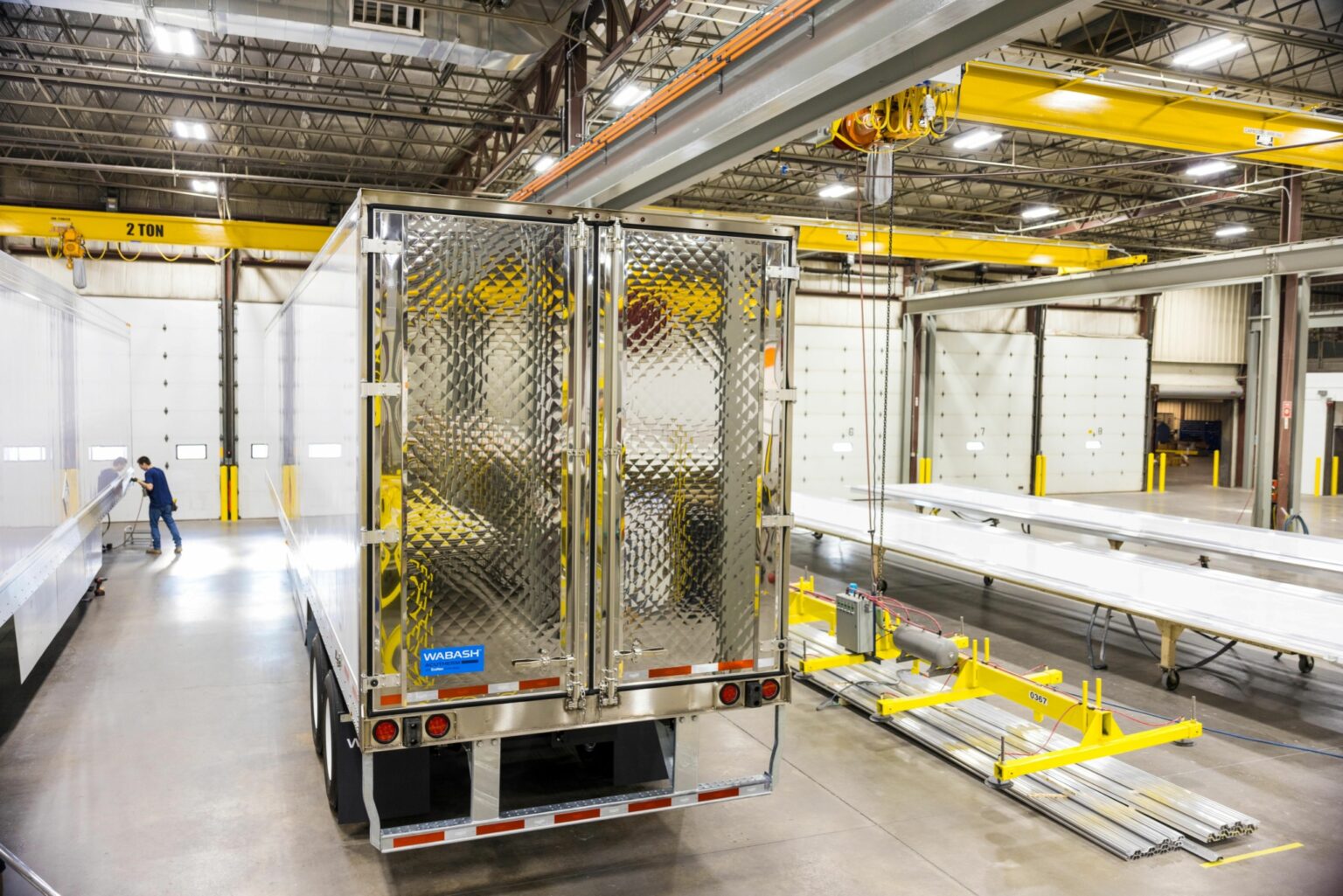Current Economic Insights
In this week’s economic update, the focus is on the troubling trends in trailer orders, significantly affected by economic uncertainty and external pressures, leading many to predict a freight recession stretching into 2026. These developments have vital implications for the logistics sector, warranting a closer examination of their broader impact.
Significant Drop in Trailer Orders
The most recent data highlights a dramatic drop in trailer orders, plummeting to just 6,738 units in May. This downward trajectory is attributed primarily to rising tariffs and economic unpredictability. While the year-over-year figures appear to show a modest increase of 3% compared to May 2024, this is overshadowed by the alarming surge in order cancellations, which reached 37.6% of gross orders, marking the highest rate in a year.
Dan Moyer, an analyst, indicated that the fluctuating tariff environment poses substantial challenges for the trailer market. The recent hike in tariffs on steel, aluminum, and related components, reaching 50% as of June 4, is expected to exacerbate production costs for original equipment manufacturers (OEMs). Consequently, this may push fleets toward postponing new purchases and considering refurbished trailers instead, sparking a ripple effect on supply and demand in the market.
Impact of Tariffs on Demand
With tariffs on imports from various countries also contributing to rising costs, there is a growing worry about demand volatility. Uncertainty regarding the legal status of certain tariffs, particularly those tied to emergency powers, further complicates the situation, forcing firms to make strategic decisions. As Moyer notes, fleets may adapt by extending trailer lifecycle and shifting focus towards refurbished or alternate configurations.
Freight Recession Prolonged
The freight recession is shaping up to be a long-lasting challenge, with analysts projecting its continuation into 2026. This perspective hinges on tariff regulations and their turbulent effects on trade practices. The implications are clear: if tariffs remain in place, the economic landscape for shippers and carriers looks increasingly bleak.
Tim Denoyer from ACT Research explains that the ongoing discussion surrounding tariff legality could impact U.S. import tariffs, which are currently around 20%. Significant delays or reductions in these tariffs could improve demand for goods, providing some much-needed relief in the freight sector. However, established tariffs on steel and aluminum present a firmer barrier that continues to restrict equipment supply. Each of these factors plays a critical role in shaping the future of freight markets and, by extension, logistics operations.
Spot Market Rate Adjustments
According to reports, there has been a softening of van rates for the week ending June 6, aligning with expected seasonal trends. Remarkably, while van rates have stabilized around prior year’s levels, refrigerated rates exhibit a decline compared to last year. The anticipated increase in demand for transporting goods related to seasonal events, such as Independence Day, may offer a short-term uplift in spot rates in the weeks to come.
Truckstop’s analysis indicates that although spot market volumes rebounded after Memorial Day, the same figures from last year distorted prior-year comparisons. With a stable number of truck postings, the Market Demand Index peaked at 93.4, showcasing the strongest levels seen in three weeks. However, these figures underline the intricate relationship between supply, demand, and pricing in the logistics sector, emphasizing that even minor fluctuations can significantly affect operations.
对物流业的影响
As freight capacities dwindle and order cancellations rise, it’s essential for logistics professionals to adapt to this rapidly evolving landscape. The ripple effects of declining trailer orders and prolonged freight recession remind us that in today’s logistics world, one has to be quick on their feet and proactive. Understanding market dynamics can aid logistics companies in making informed decisions about transportation costs, service quality, and ultimately, customer satisfaction.
Moreover, as consumers and businesses continue to demand timely and efficient logistics solutions, service providers like GetTransport.com emerge as important players. With a focus on affordable global cargo transportation, GetTransport.com offers services ranging from moving office spaces and homes to delivering bulky cargo such as furniture and vehicles. The platform’s versatility and efficiency make it an attractive option for navigating the complexities presented by economic factors affecting logistics.
最终想法
In summary, the recent declines in trailer orders, compounded by tariffs and prolonged freight recessions, paint a concerning picture for the logistics industry. Professionals in this space must stay vigilant and adaptable to mitigate challenges and leverage opportunities presented by the evolving landscape. Getting ahead of the curve is crucial—however, nothing beats firsthand experience in making informed choices.
Exploring the wealth of options available through GetTransport.com empowers logistics clients to make smart decisions without breaking the bank. Enjoying the advantages of convenience, affordability, and a wide variety of transportation solutions, clients can focus on what matters most: moving their goods with confidence. Don’t miss out on the best deals—立即通过 GetTransport.com 预订.

 拖车订单减少和货运业持续衰退:对物流业的影响">
拖车订单减少和货运业持续衰退:对物流业的影响">